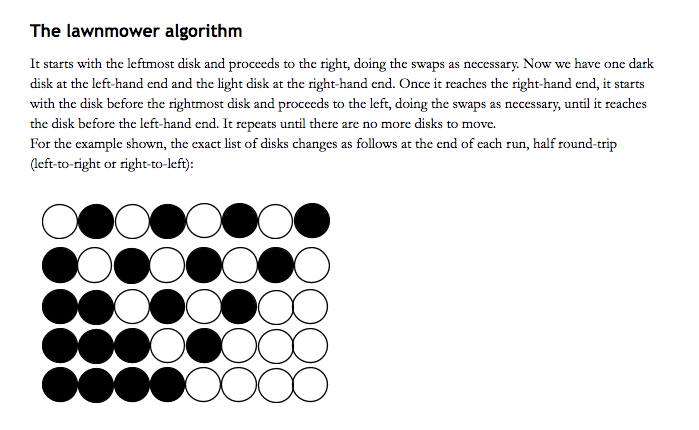Question
Need help implementing these boolean functions and algorithm problems #pragma once #include #include #include #include #include #include // State of one disk, either light or
Need help implementing these boolean functions and algorithm problems
#pragma once
#include
#include
#include
#include
#include
#include
// State of one disk, either light or dark.
enum disk_color { DISK_DARK, DISK_LIGHT };
// Data structure for the state of one row of disks.
class disk_state {
private:
std::vector
public:
disk_state(size_t light_count)
: _colors(light_count * 2, DISK_DARK) {
assert(light_count > 0);
for (size_t i = 0; i
_colors[i] = DISK_LIGHT;
}
}
// Equality operator for unit tests.
bool operator== (const disk_state& rhs) const {
return std::equal(_colors.begin(), _colors.end(), rhs._colors.begin());
}
size_t total_count() const {
return _colors.size();
}
size_t light_count() const {
return total_count() / 2;
}
size_t dark_count() const {
return light_count();
}
bool is_index(size_t i) const {
return (i
}
disk_color get(size_t index) const {
assert(is_index(index));
return _colors[index];
}
void swap(size_t left_index) {
assert(is_index(left_index));
auto right_index = left_index + 1;
assert(is_index(right_index));
std::swap(_colors[left_index], _colors[right_index]);
}
std::string to_string() const {
std::stringstream ss;
bool first = true;
for (auto color : _colors) {
if (!first) {
ss
}
if (color == DISK_LIGHT) {
ss
} else {
ss
}
first = false;
}
return ss.str();
}
// Return true when this disk_state is in alternating format. That means
// that the first disk at index 0 is light, the second disk at index 1
// is dark, and so on for the entire row of disks.
bool is_alternating() const {
// TODO: Write code for this function, including rewriting the return
// statement, and then delete these comments.
return false;
}
// Return true when this disk_state is fully sorted, with all light disks
// on the right (high indices) and all dark disks on the left (low
// indices).
bool is_sorted() const {
// TODO: Write code for this function, including rewriting the return
// statement, and then delete these comments.
return false;
}
};
// Data structure for the output of the alternating disks problem. That
// includes both the final disk_state, as well as a count of the number
// of swaps performed.
class sorted_disks {
private:
disk_state _after;
unsigned _swap_count;
public:
sorted_disks(const disk_state& after, unsigned swap_count)
: _after(after), _swap_count(swap_count) { }
sorted_disks(disk_state&& after, unsigned swap_count)
: _after(after), _swap_count(swap_count) { }
const disk_state& after() const {
return _after;
}
unsigned swap_count() const {
return _swap_count;
}
};
// Algorithm that sorts disks using the left-to-right algorithm.
sorted_disks sort_left_to_right(const disk_state& before) {
// TODO: Write code for this function, including rewriting the return
// statement, and then delete these comments.
return sorted_disks(before, 0);
}
// Algorithm that sorts disks using the lawnmower algorithm.
sorted_disks sort_lawnmower(const disk_state& before) {
// TODO: Write code for this function, including rewriting the return
// statement, and then delete these comments.
return sorted_disks(before, 0);
}


Step by Step Solution
There are 3 Steps involved in it
Step: 1

Get Instant Access to Expert-Tailored Solutions
See step-by-step solutions with expert insights and AI powered tools for academic success
Step: 2

Step: 3

Ace Your Homework with AI
Get the answers you need in no time with our AI-driven, step-by-step assistance
Get Started


